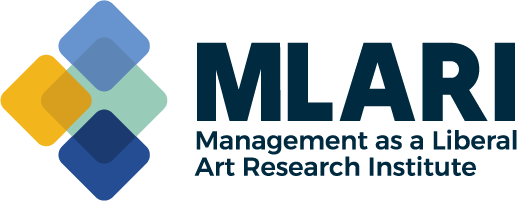Part II: Knowledge Work in a Post-Capitalist Society
PUBLISHED:
“What does ‘Capitalism’ mean when Knowledge governs – rather than Money? And what do ‘Free Markets’ mean when knowledge workers – and no one else can ‘own’ knowledge – are the true assets?” (Peter Drucker, 1999). This issue of my newsletter focuses on features of today’s knowledge work, and what knowledge work might look like in the future. In part one, I discussed some of the challenges associated with measuring knowledge worker productivity. In this installment, I’ll take up Drucker’s concept of “Post-Capitalist Society” and what it might mean for knowledge work in the 21st century.
Fear not; this will not be an academic treatise on Marx or Marxism. But central to an understanding of our knowledge-based society is some sense of how previous industrial society was configured and structured. As I argued in the last installment of this newsletter, part of our difficulty with measuring knowledge worker productivity is that we still use the language of industrial capitalism: we measure productivity in terms of output, particularly in quantity. We lack a more modern understanding of what productivity looks like. Why?
Marx and Capitalism
Marx saw capitalism as a stage in history, as part of a larger pageant of human conflict. In The German Ideology (1845), Marx critiques the idealism of German philosophy as locked in the realm of thought instead of material reality. It is time, he argues, for German philosophers to stop simply criticizing each other regarding implications of spiritual matters (the nature of knowledge, etc.) but rather to address the realities of material life. Marx was reacting to the decline of Hegelian thought, and transformed Hegel’s spiritual dialectic model into dialectical materialism. For Hegel, human development was a process of conflict at the spiritual level, when human understanding is challenged by contradicting experiences and events, leading to a new level of awareness, all guided by “Geist”. Marx took this out of the spiritual realm and grounded it in worldly events; his dialectic model was still one of human transformation and development, but it morphed into a model of class conflict. Dialectical materialism involved observable conflicts in social conditions and economic status that would then be acted upon to create a new social order.
Like Drucker, Marx was a social theorist, and was reacting to the dramatic changes he saw happening in his time. Marx and his associate Engels observed the transformation from a rural to an industrial society and the associated social upheavals. Marx and Engels focused on the shift from an economy where value was derived from labor to one that relied on machines and money (capital) to produce the material needs of human beings. The culmination of their efforts was Marx’s massive work, The Capital (Das Kapital), published in three volumes in 1867, 1884, and 1894. The work is an intricate analysis of capitalism as an economic system as well as a social structure. There is no substitute for actually reading the text, but, for our purposes here, Marx had several key points that are germane to our discussion of today’s knowledge society:
1. Labor theory of value: Marx challenged utilitarian viewpoints of value, stating that the value of products lies not in their satisfaction of human wants, but in the human labor used to produce them. Value is in production, not in the end-user’s perception of value.
2. Ownership of means of production: In earlier rural societies (at least those with free labor), labor owned the means of production (its own work). Under capitalism, a ruling class owned the machinery and financial instruments (the capital) necessary to production. They also, in fact, own the labor, as workers no longer have a say in their hours, working conditions, etc. Owners derive unearned income from the labor of workers who are under their control.
3. Alienation: The process of industrial production involves an increasing deskilling of work, meaning workers have less of an association with the larger purpose of the process or output. As labor is divided into more specialized functions, there is increased alienation.
4. Dialectical materialism: As capitalism increases social conflict (class conflict), it sows the seeds of its own demise. It is part of Marx’s historical theory of capitalism as one stage in human development. Eventually, socialism will replace capitalism, and workers will own the means of production, ushering in a new social order.
Post-Capitalist Society
In 1993, Drucker published Post-Capitalist Society, a book that advances a bold argument about Marx’s theories and the trajectories of history. It was one of his more successful books, and I think he left us with much to think about as we navigate the waters of the new or next knowledge society.
Drucker looks back on Marx’s evaluation of capitalism with an historical view, much like Marx looked at Hegelian and other assessments of society in his time. In this sense, Drucker follows in the tradition of European theorists critiquing the ideas of the past, using an historical argument. According to Drucker, the manufacturing economy framed the conversation around society, economics, and politics from the late 1800s to the 1950s. Marx’s labor theory of value dominated discussions, as workers competed to have equal power and voice with owners (capitalists). However, as Drucker argues, the owners of capital (the financial titans of industry) peaked by the First World War, and were replaced by professional managers by the 1950s. The classic dialectic between labor and capital was no longer relevant by the 1950s, as “capitalists” no longer existed. Drucker posits that by the 1970s, “capital” would be in the hands of the workers themselves in the form of pensions, mutual funds, and other collective methods of corporate ownership.
According to Drucker, the factors of production were no longer labor or capital, but knowledge by the mid-20thcentury. Knowledge workers owned the capital (pension funds, and later 401ks) and also owned the means/tools of production (knowledge). This perspective upended not only traditional notions of capitalism as viewing labor and capital as the primary inputs for production, but also upset the social order. Moreover, we faced a new economic challenge of measuring productivity in a new way (related to knowledge) but also a social challenge as the old service (manual labor) workers would be left behind. Furthermore, we would face a dichotomy between intellectuals and managers. Both of these conflicts are akin to what Marx alluded to in his reference to dialectical materialism. In essence, while highly critical of Marx, Drucker used a version of Marxist theory to postulate the existence of a “post-capitalist society.”
Drucker was no fan of Marx but uses an historical argument and similar language about analysis of inputs (labor and capital, but in Drucker’s case, knowledge). The difference is that Drucker is not engaging in a dialectical process (and not one focused on material concerns alone). According to Drucker, one of the primary reasons that Marx’s worldwide proletarian revolution failed to materialize was the inadequacy of his model of “economic man” (his sole emphasis on material satisfaction as an indicator of society’s wellbeing). Drucker rejected this model of society, arguing for an industrial model of society where the manufacturing plant community provided meaning to the worker. Crucial to defeating the forces of totalitarianism (and Marxism, for that matter) was providing individuals in society with status and function. Status gives people a place in the social structure, whereas function provides individuals with a purpose. Economic meaning was not enough; people needed this larger sense of individual and community meaning. In the early twentieth century, because of the incredible gains in manufacturing productivity, capitalism emerged as the dominant system. However, as society moved away from industrial employment towards knowledge work, this new post-capitalist society presented new challenges – including the possibility for social disorder.
Thus, Drucker turned to understanding the “knowledge society”, a new stage in human development. According to his analysis, what were the new challenges inherent in this new knowledge society? As we saw in the previous installment of this issue, knowledge worker productivity and its measurement represented one such challenge – one we still face. Drucker also wrestled with questions of worker motivation, social disorder, and compensation disparities. In our next installment, we’ll expand on Drucker’s concerns and see how they might help us understand where we are with our current knowledge society and the challenges we face.





